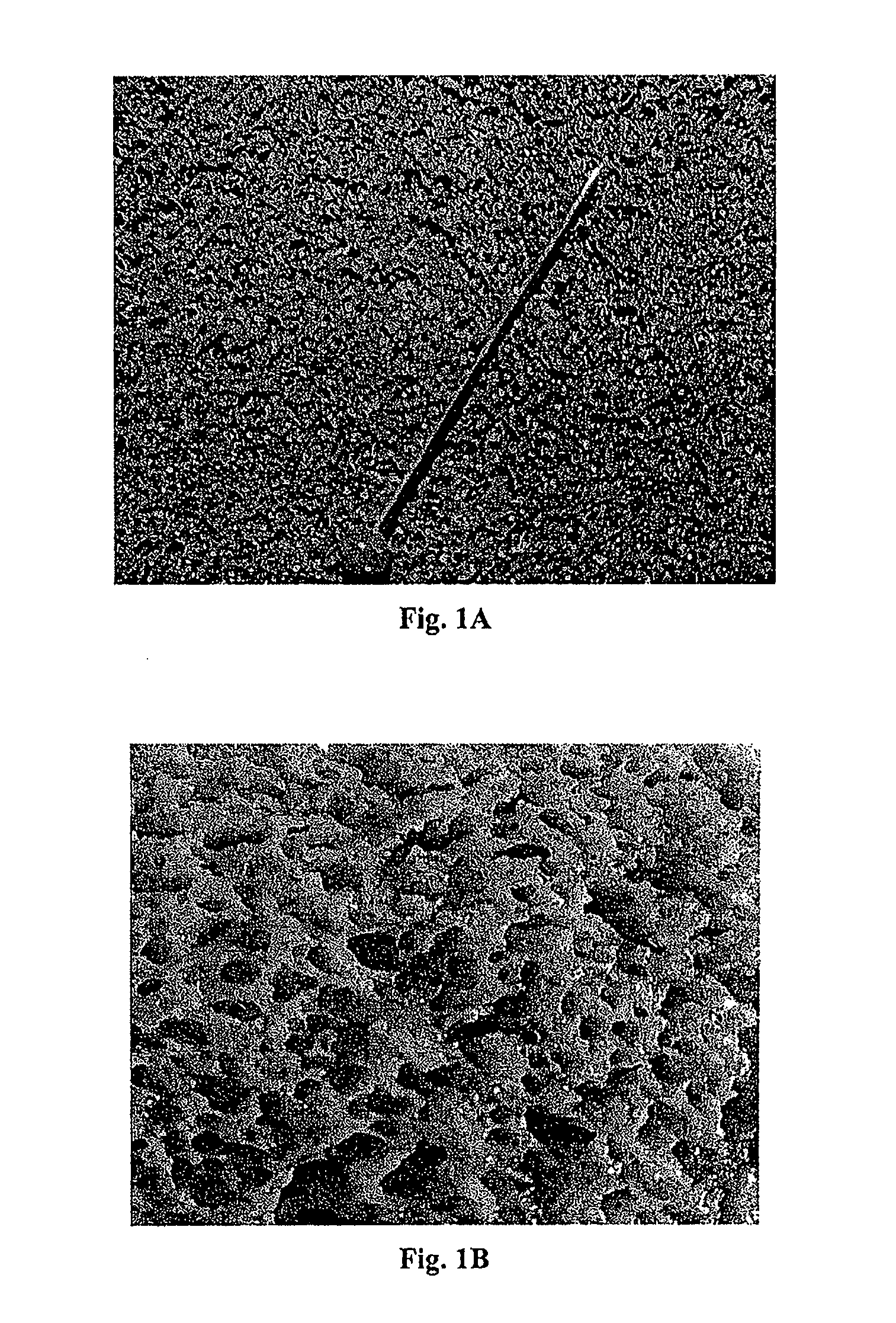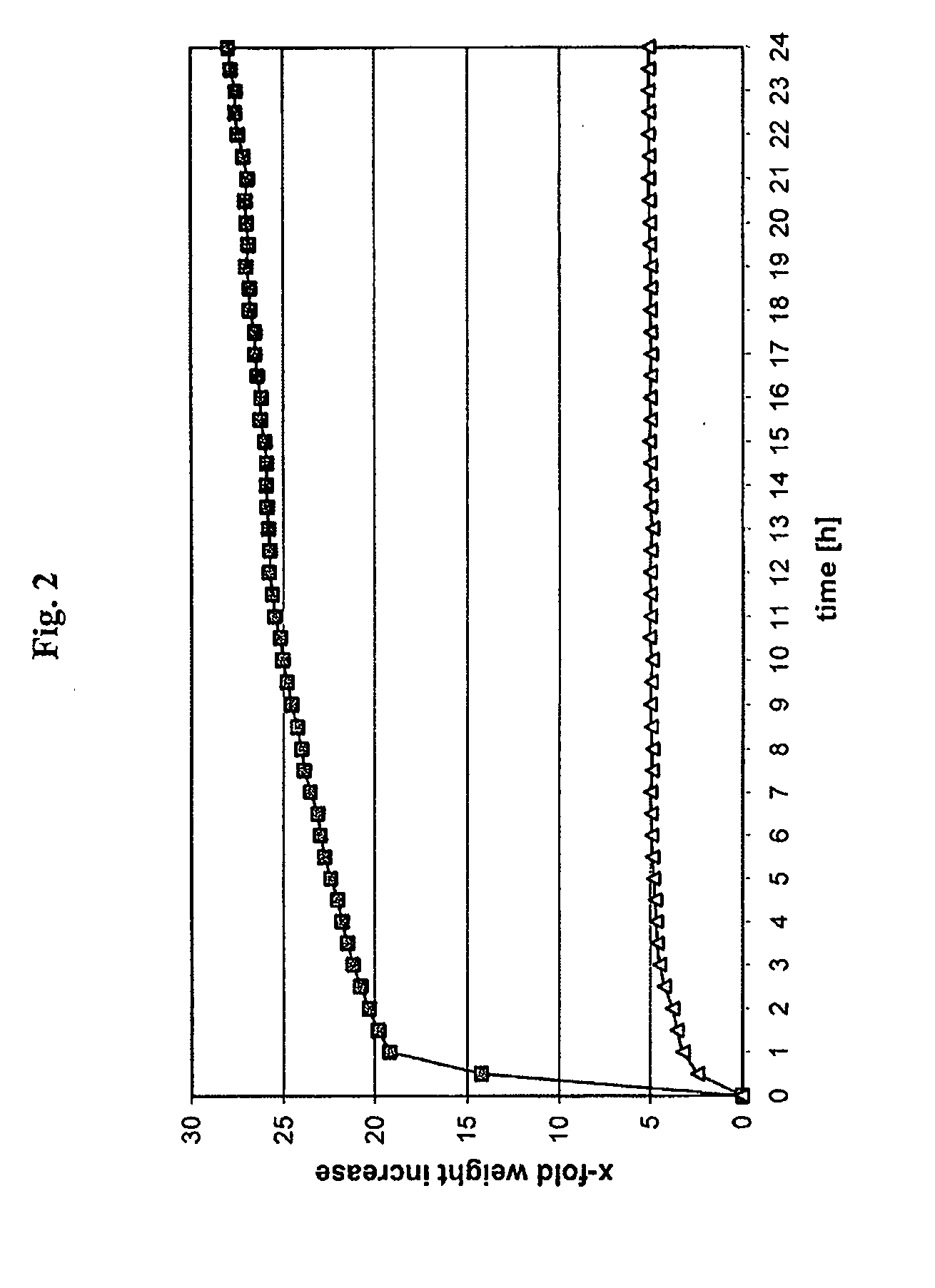Water-swellable hybrid material with inorganic additives and method of Producing same
a hybrid material and additive technology, applied in the direction of conductive materials, fertiliser forms, herbicides and algicides, etc., can solve the problem of particles that require a relatively long time to swell completely
- Summary
- Abstract
- Description
- Claims
- Application Information
AI Technical Summary
Benefits of technology
Problems solved by technology
Method used
Image
Examples
example 1
[0089]In a glass beaker, 180 g deionized water was added first and mixed with 150 g acrylic acid at room temperature. Then while stirring, 7 g urea was added and dissolved therein. The pH was about 1.6. Next, 0.02 g Wako V50 and 0.4 g butanediol diacrylate was added as the crosslinking agent. Then 460 g inorganic solids (mixture of powdered lava rock 200 g (Eifelgold from the company Lavaunion in Germany, <0.2 mm average grain size), 60 g bentonite (Agromont Calif. from S&B Minerals, <0.065 mm average grain size) and 200 g sand (from Quarzwerke Baums, L60, 0.2 mm average grain size)) were added while stirring and the slurry was homogenized. The acrylic acid was partially neutralized by adding 75 g KOH. Then the polymerization reaction was initiated by adding 0.15 g potassium disulfite, 0.9 g sodium peroxodisulfate and 0.45 g ascorbic acid (dissolved in water). In the course of the exothermic polymerization reaction, water vapor and carbon dioxide gas were released. An elastic spongy...
example 2
[0090]Using the same material as that described in Example 1, another polymerization batch was prepared, but using 260 g deionized water. The pH was about 1.6. In the course of the exothermic polymerization reaction, water vapor (approximately 2% water was evaporated) 23- and carbon dioxide gas were released at an average reaction temperature of 80° C., so the volume of the batch was increased by approximately 50%. The resulting elastic spongy product having closed pores was gently pulverized by means of a slowly rotating cutting tool. The resulting hybrid material had a maximum swellability (24 hours in deionized water) amounting to approximately 30 times its inherent weight and had a Shore hardness of approximately 20 in the condition in which it was moist from production (water content approximately 35 wt %).
example 3
[0091]A polymerization batch as described in Example 1 was prepared using the same materials in the amounts stated there. During the exothermic polymerization reaction, the reaction vessel was cooled in a water bath so that the average reaction temperature was kept at approximately 65° C. The volume expansion amounted to approximately 15%. The product was pulverized as described in Example 1. The resulting hybrid material had a maximum swellability (24 hours in deionized water) of approximately 25 times its inherent weight and a Shore hardness of approximately 28 in the condition of being moist from production (water content approximately 35 wt %).
PUM
| Property | Measurement | Unit |
|---|---|---|
| temperature | aaaaa | aaaaa |
| reaction temperature | aaaaa | aaaaa |
| temperatures | aaaaa | aaaaa |
Abstract
Description
Claims
Application Information
 Login to View More
Login to View More - R&D
- Intellectual Property
- Life Sciences
- Materials
- Tech Scout
- Unparalleled Data Quality
- Higher Quality Content
- 60% Fewer Hallucinations
Browse by: Latest US Patents, China's latest patents, Technical Efficacy Thesaurus, Application Domain, Technology Topic, Popular Technical Reports.
© 2025 PatSnap. All rights reserved.Legal|Privacy policy|Modern Slavery Act Transparency Statement|Sitemap|About US| Contact US: help@patsnap.com



